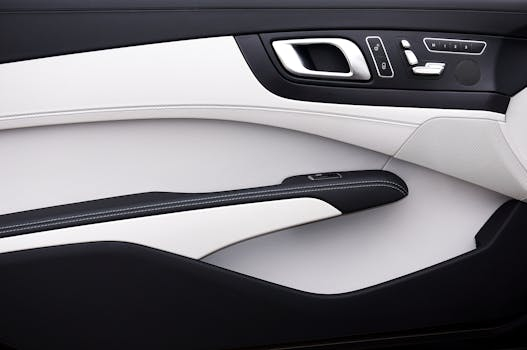Lightweight Materials Transforming Car Design
With the ever-increasing focus on sustainability and fuel efficiency in the automotive industry, lightweight materials have emerged as a game-changing solution for car design. From electric cars to traditional combustion engine models, automakers are turning to lightweight materials to reduce vehicle weight, improve performance, and enhance overall driving experience. In fact, lightweight materials have become the driving force behind the future of car design, making it one of the most exciting and transformative areas in the automotive world. Let’s delve deeper into the world of lightweight materials and how they are revolutionizing car design.
Enhancing Fuel Efficiency and Performance
At its core, lightweight materials refer to any material that is significantly lighter than traditional materials, such as steel and iron, used in car manufacturing. These materials include aluminum, magnesium, carbon fiber, and advanced high-strength steel, among others. The primary goal of using lightweight materials in car design is to reduce the overall weight of the vehicle, resulting in improved fuel efficiency and performance. According to a study by the Environmental Protection Agency (EPA), every 100 pounds of weight reduction in a vehicle can result in a 1-2% improvement in fuel economy.
Aluminum – The Go-to Lightweight Material
One of the most widely used lightweight materials in car design is aluminum. With its high strength-to-weight ratio, aluminum offers a significant weight reduction without compromising on structural integrity. In fact, most modern cars today use aluminum in place of steel for body panels and other essential components. For example, the new Ford F-150 has an aluminum body, making it 700 pounds lighter than its predecessor, resulting in improved fuel economy and towing capacity.
Moreover, aluminum is also highly recyclable, making it an environmentally friendly option for car manufacturing. The use of aluminum not only reduces vehicle weight but also allows for more efficient engine operation, resulting in improved fuel efficiency and better overall performance.
Carbon Fiber – The Future of Lightweight Materials
While aluminum is currently the go-to lightweight material for car design, carbon fiber is emerging as the future of lightweight materials. With its high strength-to-weight ratio, carbon fiber is significantly lighter than aluminum, making it the ideal material for performance cars. Many supercars and high-performance sports cars, such as the McLaren 720S and Porsche 911 GT3, use carbon fiber extensively in their construction, resulting in faster acceleration, better handling, and improved fuel efficiency.
However, the primary drawback of carbon fiber is its high cost, which limits its use in mainstream car models. But with continued advancements in manufacturing and technology, the cost of carbon fiber is expected to decrease, making it a more viable option for mass-produced vehicles in the future.
The Importance of Lightweight Materials in Electric Cars
With the rise of electric cars, the use of lightweight materials has become even more critical. As electric cars rely on battery power, reducing the weight of the vehicle is crucial for extending the driving range. This is where lightweight materials, such as aluminum and carbon fiber, come into play. For example, the Tesla Model S, with its aluminum body, has a range of up to 402 miles on a single charge, making it one of the longest-running electric cars on the market.
Challenges and Future Prospects
While lightweight materials have proven to be a game changer in car design, they also come with their own set of challenges. The adoption of these materials requires significant investment in research and development, as well as specialized manufacturing techniques. Moreover, the use of lightweight materials also raises concerns about safety and crashworthiness. However, with continued advancements in technology and increased awareness about the benefits of lightweight materials, these challenges are expected to be addressed in the future.
The future prospects for lightweight materials in car design are undoubtedly bright. With stricter emissions regulations and consumer demand for fuel-efficient and sustainable vehicles, automakers will continue to turn towards lightweight materials for their design. The use of these materials not only results in improved fuel efficiency and performance but also reduces the environmental impact of car manufacturing.
The Lightweight Revolution in Car Design
It is safe to say that lightweight materials are transforming the automotive industry, paving the way for a more sustainable and fuel-efficient future. From traditional combustion engine models to electric cars, lightweight materials are playing a significant role in improving performance, driving range, and overall driving experience. With continued advancements in technology and cost-effective manufacturing techniques, we can expect lightweight materials to play an even more significant role in shaping the future of car design.







